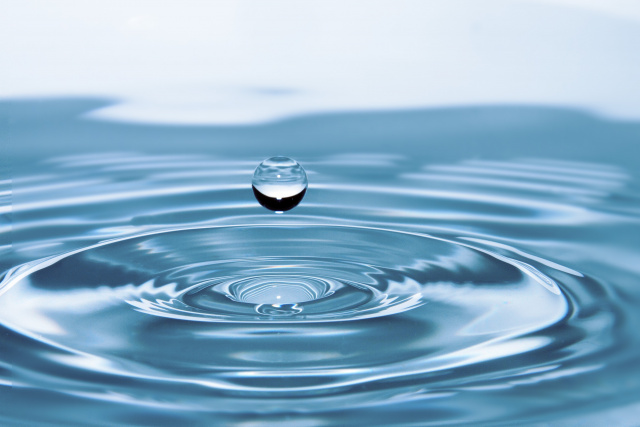About This Lesson
Did you know that 60% of your body is made of water? This means that humans must stay hydrated to be healthy. In America alone, people drink the equivalent of over one billion glasses of water each day. The U.S. is lucky to have clean drinking water; many parts of the world don’t. Easily accessible clean water is often taken for granted; simply turn the knob on your faucet and there it is. Water is the elixir of life; when its clean, it protects people from serious waterborne illnesses.
How is the water made safe for drinking? First, it’s important to know where freshwater originates. It comes from two main sources: either surface water or groundwater. Surface water comes from rain and melting snow that runs off into streams, rivers and lakes. Groundwater comes from the runoff that seeps into the soil and naturally stored in aquifers (underground natural structures of rocks, sand and soil).
How Does It Become Tap Water?
Private Well
Some rural areas don’t have a municipal water source, so each household must use its own private well which accesses groundwater. Approximately 10% of American households rely on private wells. The homeowners must manage their own water testing and filtration to ensure that it’s safe to drink; the Environmental Protection Agency only regulates public drinking water.
Public Water System
There are 150,000 public water systems in the U.S. This water is pulled from different sources of both surface water and groundwater. Then, the drinking water must ultimately meet the U.S. EPA’s Safe Drinking Water Standards.
Depending on the location from which it originates, some water contains too much magnesium and calcium, resulting in what is known as hard water. Hard water can cause problems like clogged pipes and it makes it difficult for soap to dissolve in the water. A water softener system can make life a lot easier when you have hard water.
How Is Public Water Made Into Safe Drinking Water?
-
Catching
A treatment plant is connected to its water source through a line of pipes and pumps. Gravity is taken advantage of as much as possible to move water from one place to another.
-
Screening
Water will arrive at the treatment area carrying debris (e.g., plant waste, trash, etc.) from its source. Big metal screens begin the water cleaning process by trapping bigger debris.
-
Adding Coagulants and Forming Floc
The water will still have some small debris like dirt. Coagulants (positively charged chemicals, such as aluminum sulfate or activated silica) are added to the water. The dirt particles are negatively charged, so the coagulants bind with them. The resulting gelatinous particles are called floc.
-
Removing the Floc
Now, easy to separate from the water, the floc is pumped into a sedimentation pond. The water is further clarified.
-
Adding Ozone
Some treatment systems add ozone (a highly reactive gas) to the water. The ozone kills harmful viruses, bacteria and protozoans, and degrades pesticides. It also reduces the amount of manganese, sulfur and iron in the water, which helps to eliminate foul tastes and odors.
-
Filtering
Gravity is implemented again to pull the water through filters which are comprised of materials like gravel, sand, activated charcoal. Small particles are extracted from the water.
-
Disinfecting
There are remaining microorganisms that must then be killed to ensure safe consumption. Chlorine or bleach is added to the water, and ammonia may be also if additional sterilization is needed. Some water treatment systems add fluoride to provide dental benefits.
-
Distributing
The water is tested to make sure that it meets the EPA’s standards for safe drinking water. Finally, it’s sent to places where it’ll be stored for easy access by homes and businesses through their private taps.
If your home receives its water from a public water supply, you now know that it goes through quite the journey from below the ground, all the way to your home’s faucet. Dirty, unhealthy water is transformed into clean, refreshing drinking water for your family to enjoy.












